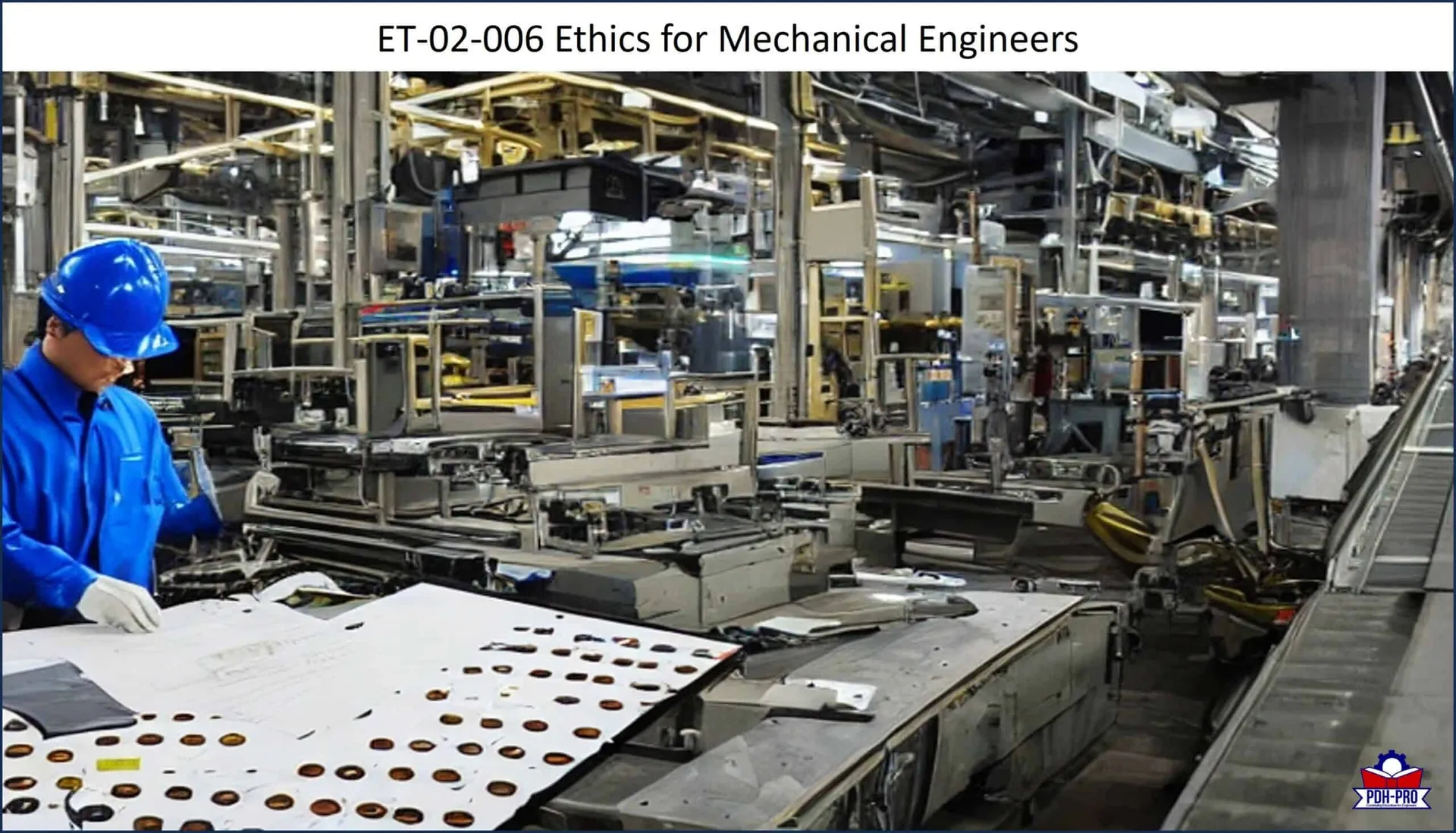
- Home
- Contact Us
- Corporate Solutions
- Webinars
- Packages
- Courses
- Categories
- Live Webinars
- Packages
- Chemical Engineering
- Civil Engineering
- Electrical Engineering
- Petroleum Engineering
- Environmental Engineering
- Geotechnical Engineering
- Mechanical Engineering
- Structural Engineering
- Sustainability
- State Rules and Regulations
- Ethics and Law
- Project Management
- HSSE
- Petroleum Engineering
- Timed & Monitored – Ohio
- On Demand Webinars
- More
Course Full With Both Sidebar
Condimentum Cursus Lorem ParturientInstructorPDH Pro Staff
TypeOnline Course
Price$42
Please sign in first
Not a member?
Please simply create an account before buying/booking any courses.
Create an account for free!
Ethics for Mechanical Engineers
Ethics for Mechanical Engineers The Engineering Code of Ethics requires professionals to hold the public health, safety and welfare paramount. Many engineering organizations, such as the ASME, have drafted codes of ethics to which their members are required to commit. These codes have many similarities and are based on a few fundamental principles that provide... Learn More
InstructorPDH Pro Staff
TypeOnline Course
Price$42
Please sign in first
Not a member?
Please simply create an account before buying/booking any courses.
Create an account for free!
Ethics for Electrical Engineers
Ethics for Electrical Engineers The Engineering Code of Ethics requires professionals to hold the public health, safety and welfare paramount. Many engineering organizations, such as the IEEE, have drafted codes of ethics to which their members are required to commit. These codes have many similarities and are based on a few fundamental principles that provide... Learn More
InstructorPDH Pro Staff
TypeOnline Course
Price$42
Please sign in first
Not a member?
Please simply create an account before buying/booking any courses.
Create an account for free!
Ethics for Environmental Engineers
Ethics for Environmental Engineers The Engineering Code of Ethics requires professionals to hold the public health, safety and welfare paramount. Many engineering organizations, such as the AEESP, have drafted codes of ethics to which their members are required to commit. These codes have many similarities and are based on a few fundamental principles that provide... Learn More
InstructorPDH Pro Staff
TypeOnline Course
Price$42
Please sign in first
Not a member?
Please simply create an account before buying/booking any courses.
Create an account for free!
Ethics for Chemical Engineers
Ethics for Chemical Engineers The Engineering Code of Ethics requires professionals to hold the public health, safety and welfare paramount. Many engineering organizations, such as the AIChE, have drafted codes of ethics to which their members are required to commit. These codes have many similarities and are based on a few fundamental principles that provide... Learn More
InstructorPDH PRO
TypeOnline Course
Price$199
Please sign in first
Not a member?
Please simply create an account before buying/booking any courses.
Create an account for free!
Maryland Structural Engineering Package
Maryland Structural Engineering Package All Required 16 PDH for only $199 Regularly $336 – Save $137 (41% off) Complete continuing education packages built specifically for engineers registered in the State of Maryland. Designed to fulfill the entire continuing education requirement. This package was designed specifically for Maryland structural engineers looking to satisfy all of the... Learn More
Course Categories
- Chemical Engineering
- Civil Engineering
- Electrical Engineering
- Environmental Engineering
- Ethics and Law
- Geotechnical Engineering
- HSSE
- Live Webinars
- Mechanical Engineering
- On Demand Webinars
- Packages
- Petroleum Engineering
- Project Management
- State Rules and Regulations
- Structural Engineering
- Sustainability
- Timed & Monitored – Ohio








